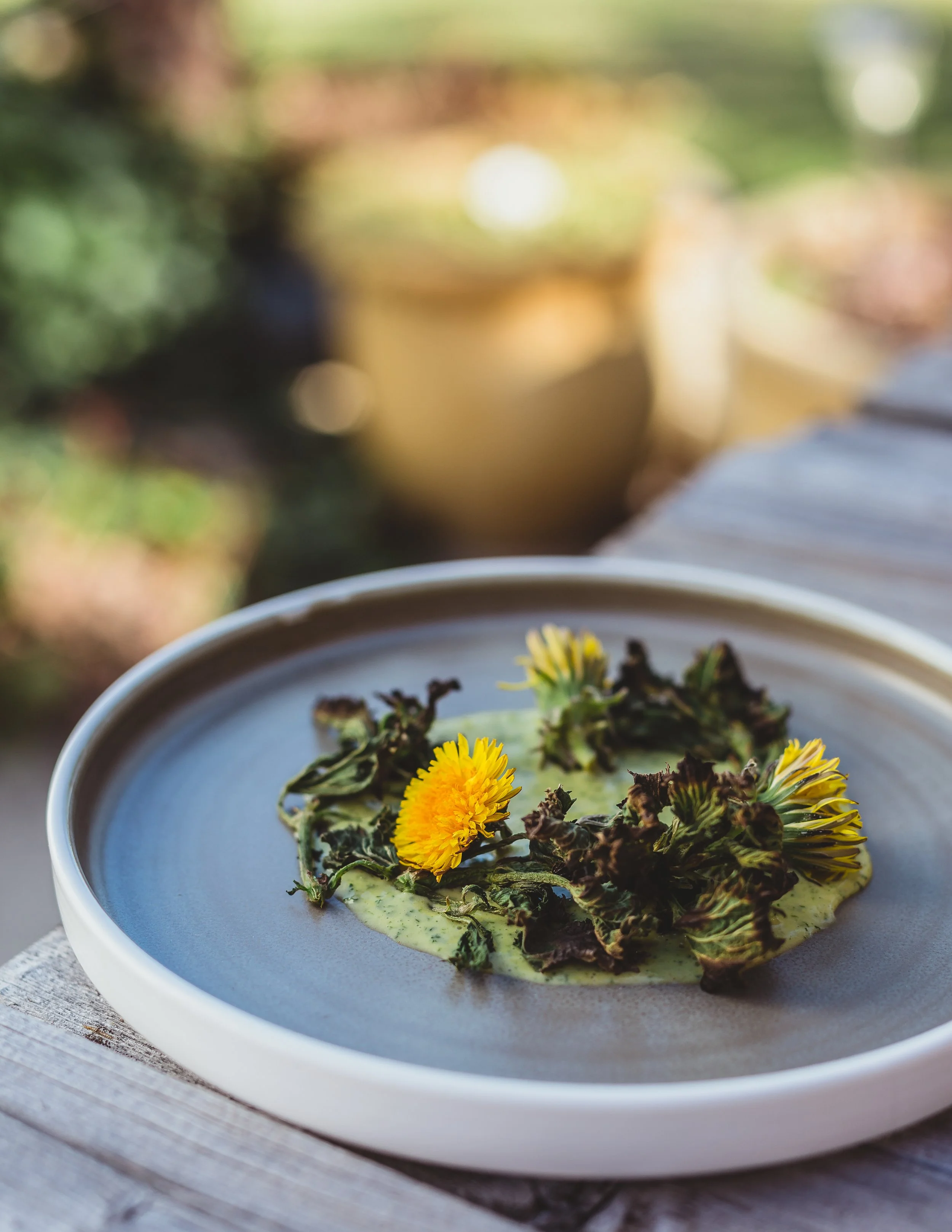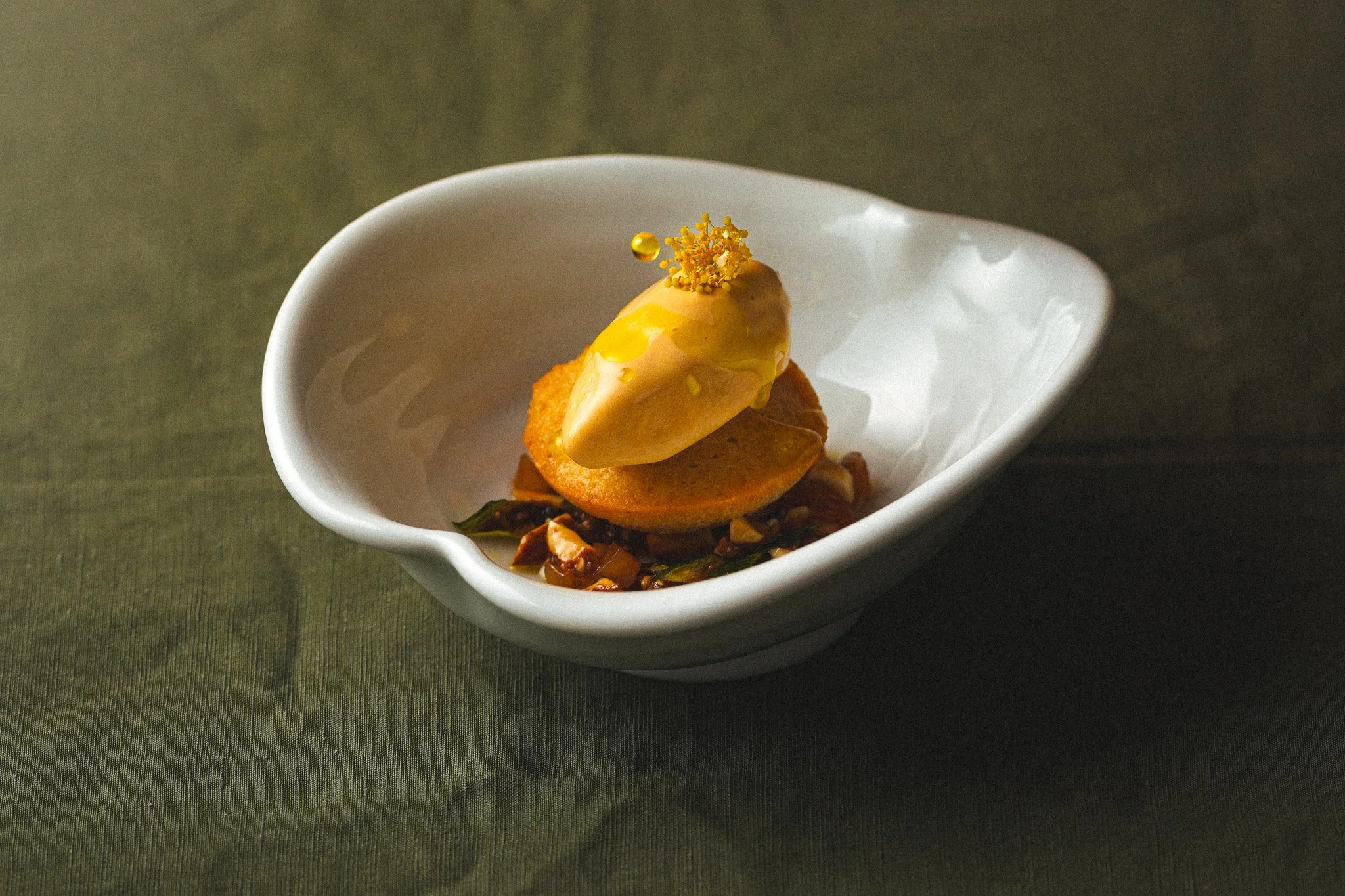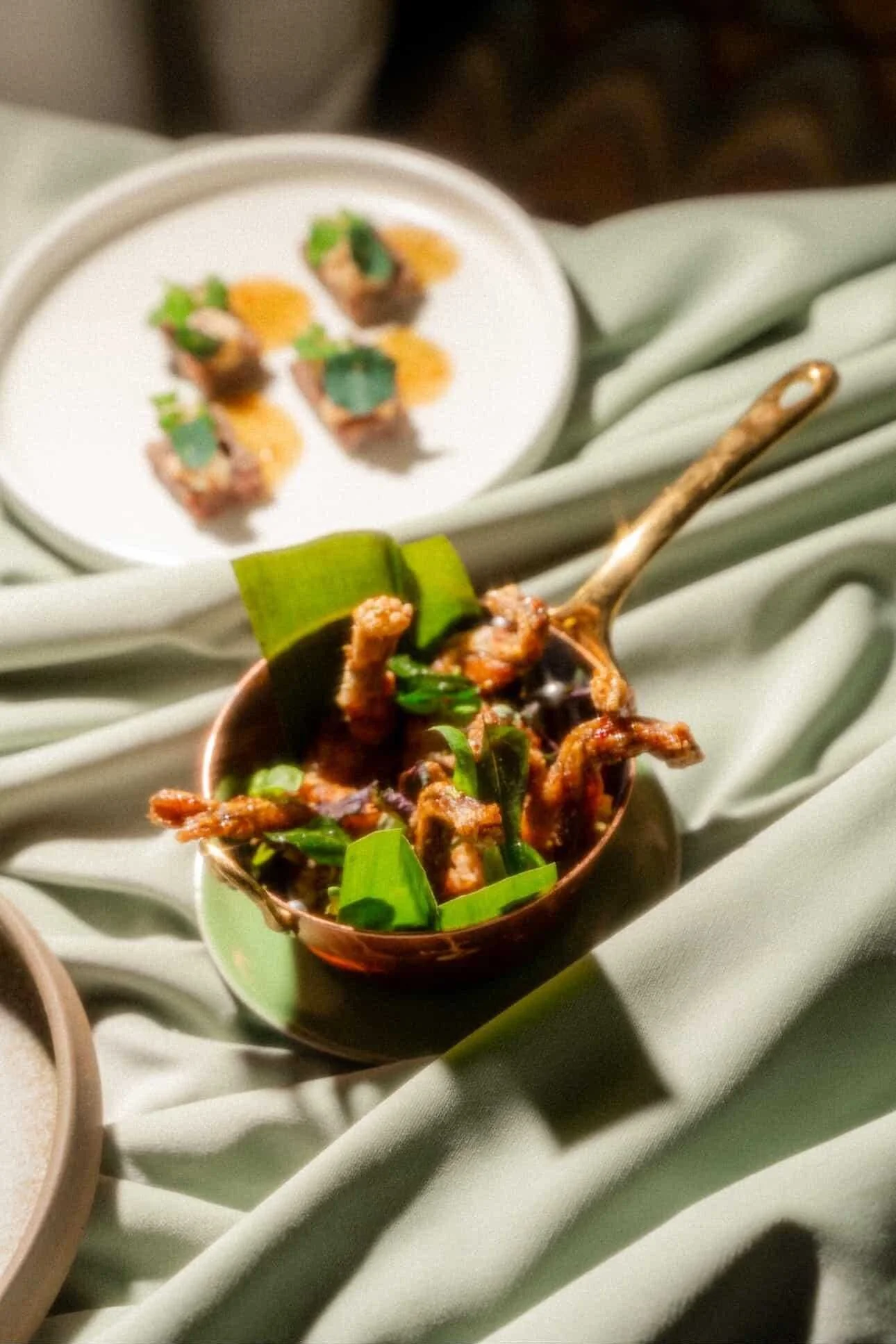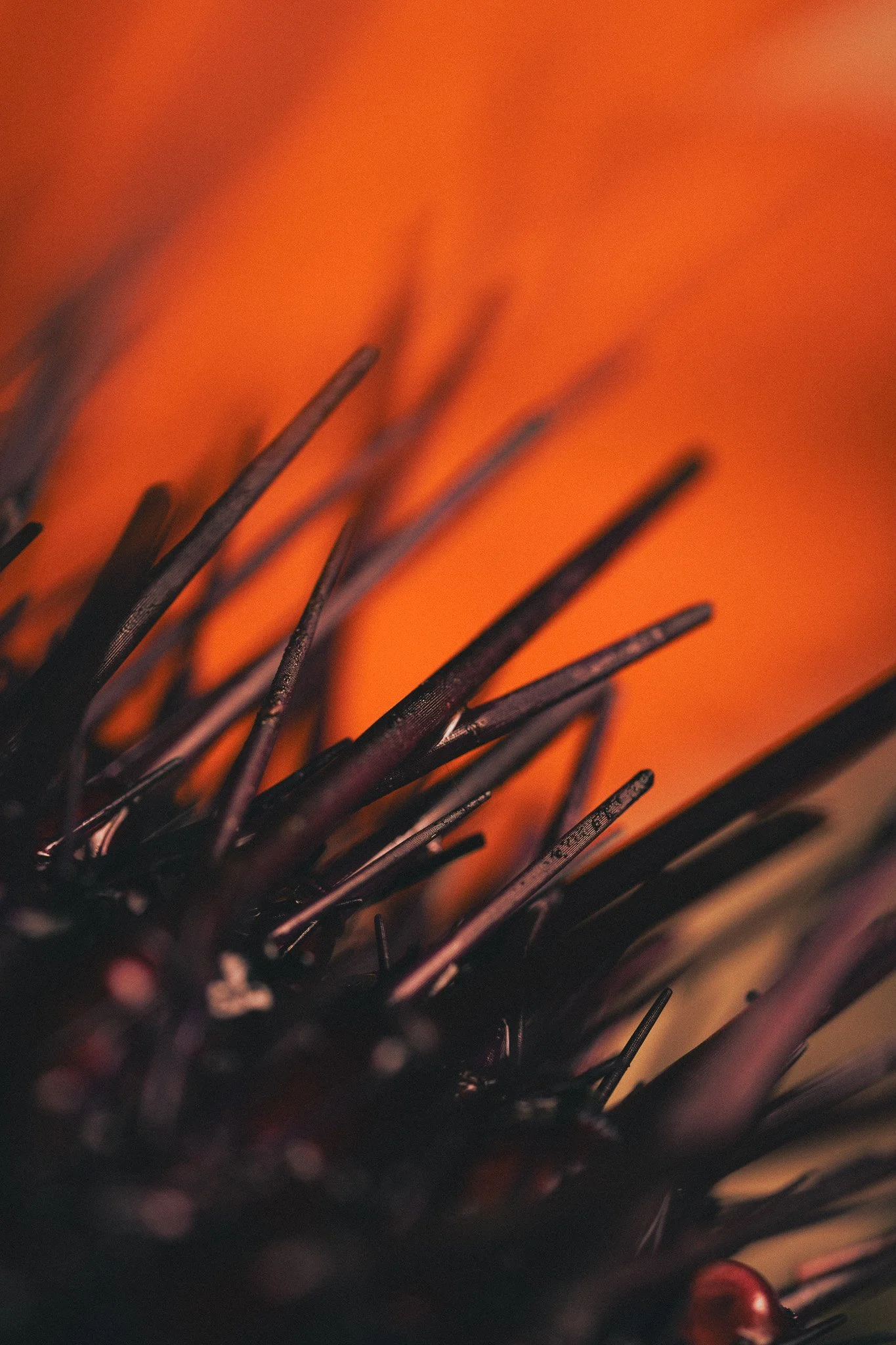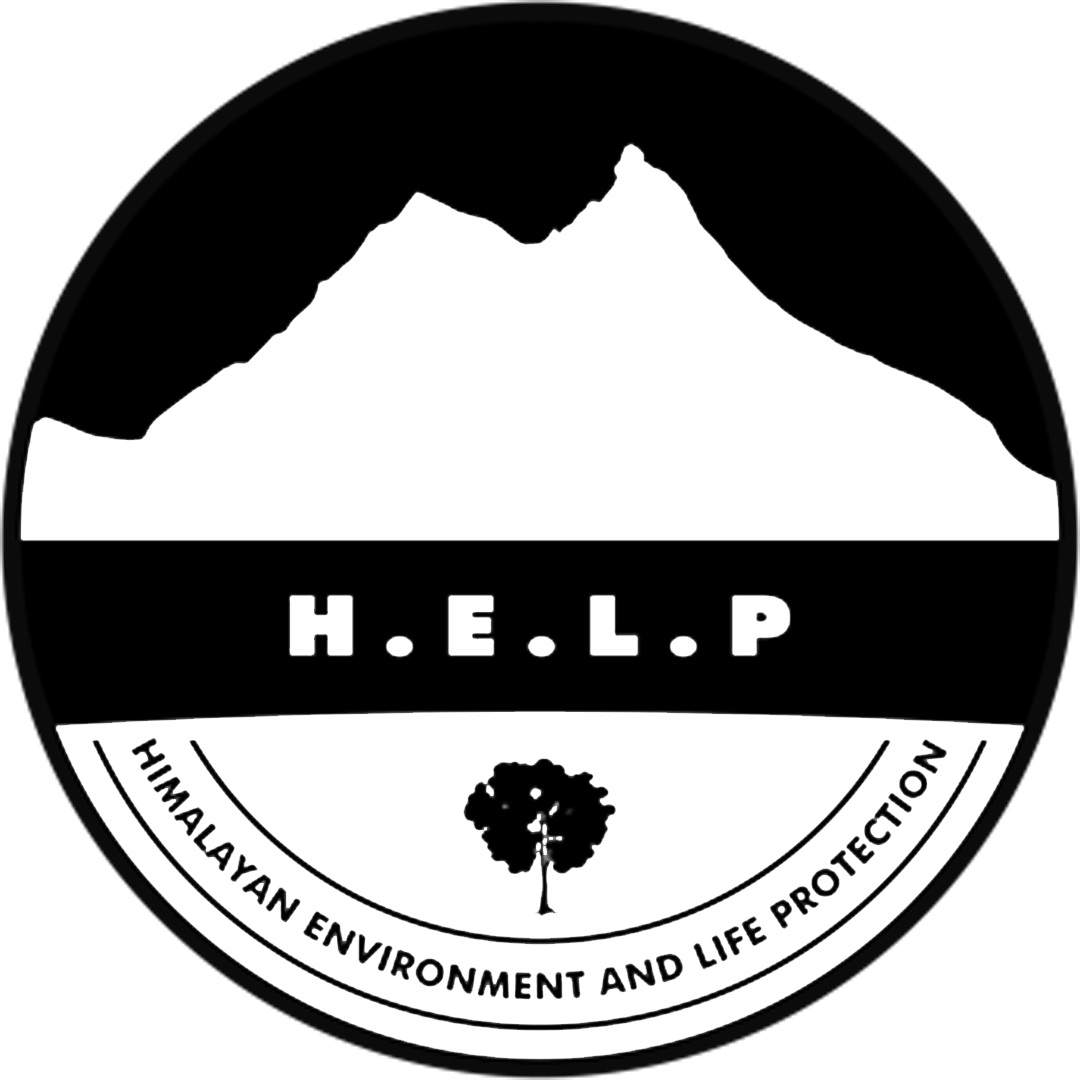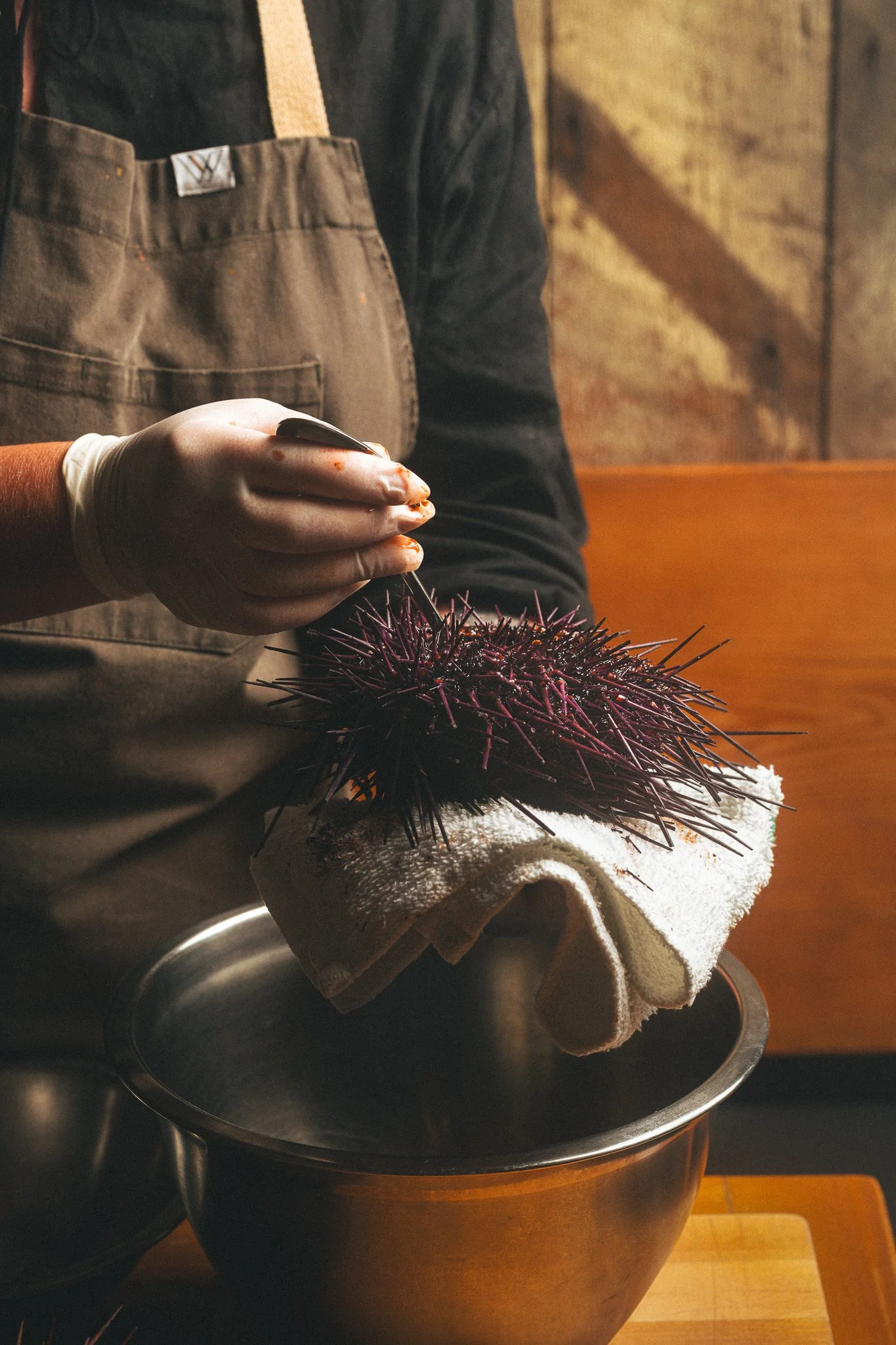An ongoing collaboration, transforming the challenge of overabundant and invasive species into regenerative opportunities that move from wild to table.
Rebalance, Reframe, Reset
First Taste is with The Eyes
Illuminating the Boundless Potential of Unexpected Ingredients
A forest reborn at the edge of a plate. A kelp bed rebuilt by the touch of uni butter. The most rarefied meals becoming the most regenerative acts.
A collaborative activation of Biodiversity+ Design — where cuisine meets conservation. Each bite becomes part of a culinary adventure that reimagines how we nourish the planet, together.
Uni Butter Pasta
Uni pasta with spring peas, rapini, Fleur des Mont cheese, wood sorrel, and chive blossoms.
Chef Robin Kort
Weed Goddess Salad
Nettle & dandelions with European Mustard Leaf Goddess Dressing.
Chef Paul Rogalski
Uni Gelato
A savory, sweet dessert made from Pacific Giant Red Sea Urchin roe, braised burdock root, fig, candied almonds, and olive oil.
Chef Andrea Carlson
Fried Idli with Uni Butter & Curry Leaf
Idli (fermented rice and lentil cake) fried in uni butter seasoned with podi masala and topped with fresh uni and crispy curry leaf.
Chef Tushar Tondvalkar
Crispy Frog Legs
Crispy frog legs with Mẹ’s chilli fish sauce glaze. Photo by Juno Kim.
Chef Jonathan Lee
Shaken Beef & Watercress Salad
Grass-fed rib eye, butter soy glaze and watercress, grape tomatoes & black pepper vinaigrette salad. Photo by Leila Kwok.
Chef Ly Nguyen
Introduced by Humans. Thriving in Imbalance.
Overabundant and invasive species aren’t the enemy.
They’re symptoms of a deeper imbalance — set in motion by global trade, climate change, and centuries of human disturbance.
Ocean Wise research shows that an overabundance of urchins has contributed to the decline of kelp forests in the Pacific Northwest. With every seafood choice, you can help tip the scales back towards a balanced ecosystem.

Three billion people rely on seafood as an important source of protein. By choosing overabundant or invasive species for your next meal, you can support Sustainable Fisheries.
The Ecological Crisis We Can Taste
Invasive Species Are Everywhere.
We Just Haven’t Learned to Eat Them
Drink the Invasives — From Weed to Wellness
In the high Himalayas of Nubri, Nepal, the wild rose known locally as gob-chi once grew unchecked, overrunning fields and stone walls.
Today, what was once considered a nuisance has been reimagined: its antioxidant-rich fruits, long used in Tibetan herbal teas for their nourishing qualities, now form the basis of a new community-led value chain.
Through partnerships with TEALEAVES and H.E.L.P, villagers are turning an invasive plant into a source of pride, livelihood, and well-being.
Watch this short video to see how biodiversity loss, isolation, and climate challenges have shaped life in Samagaun, and how the community is working to build a more resilient future.
H.E.L.P was awarded the UN Equator Prize 2023 for this initiative.
Discover Wild Himalayan Mountain Tea, a rare TEALEAVES blend infused with the vibrant gob-chi berry.










